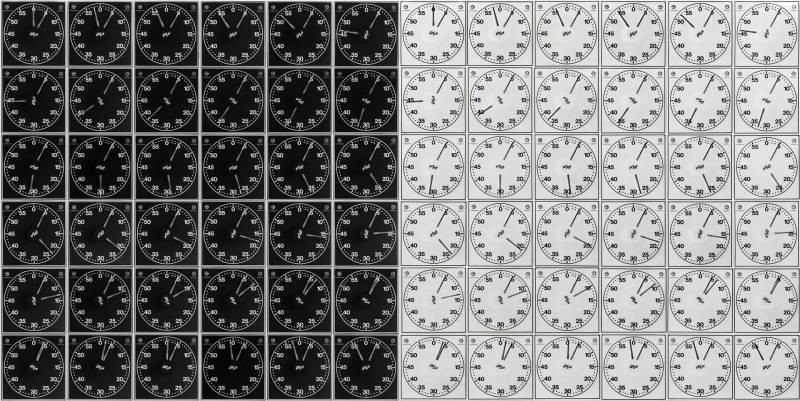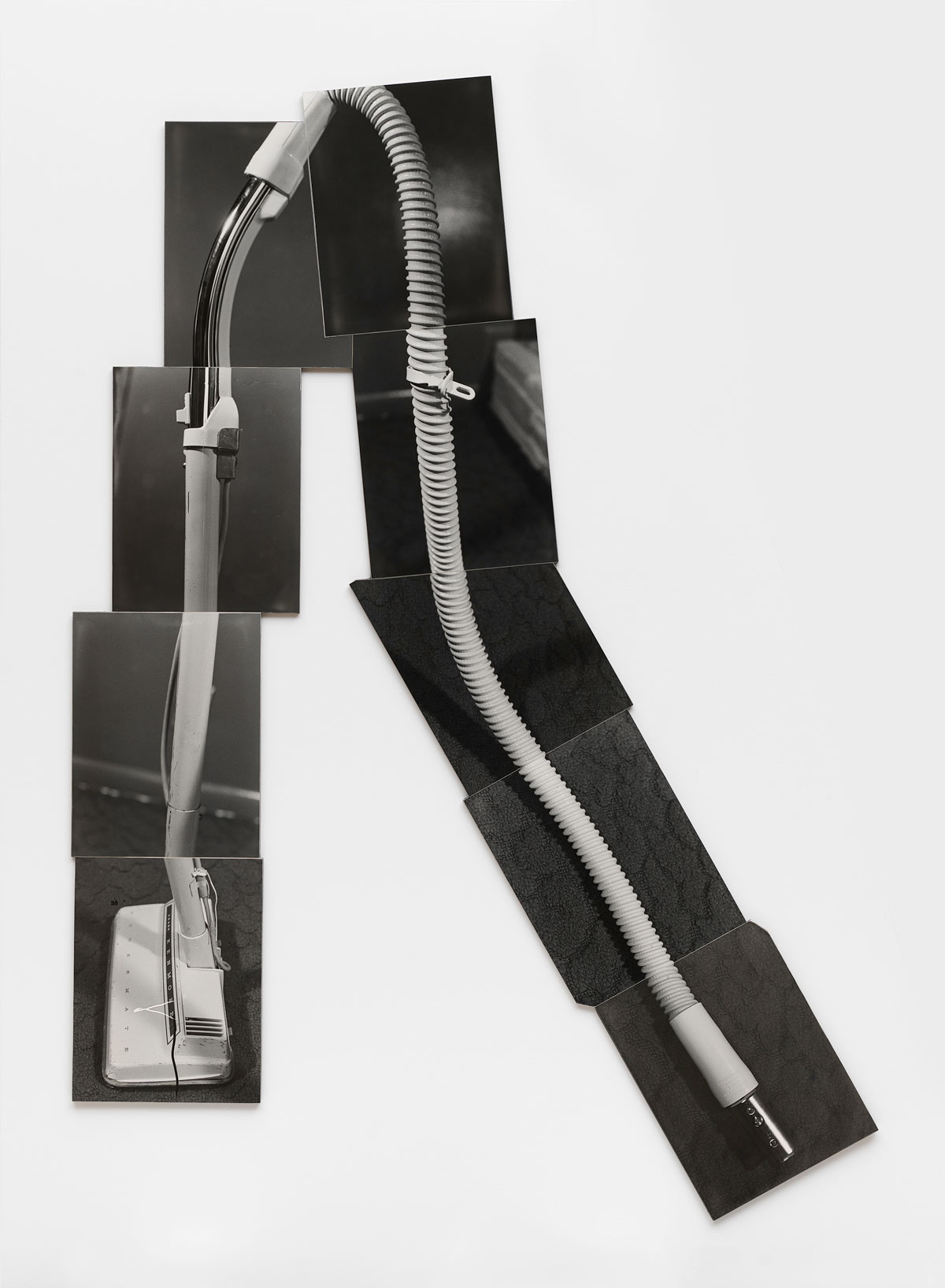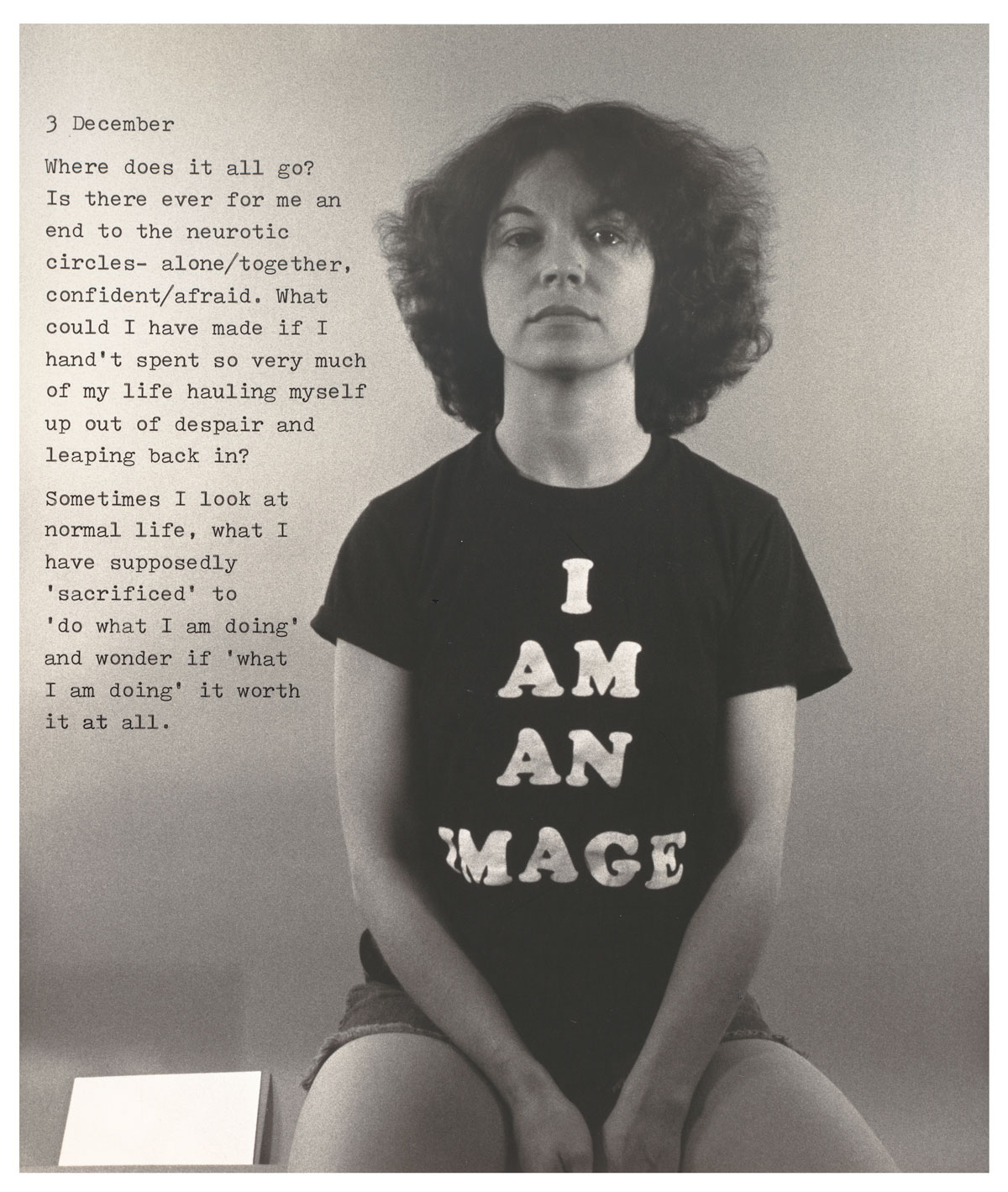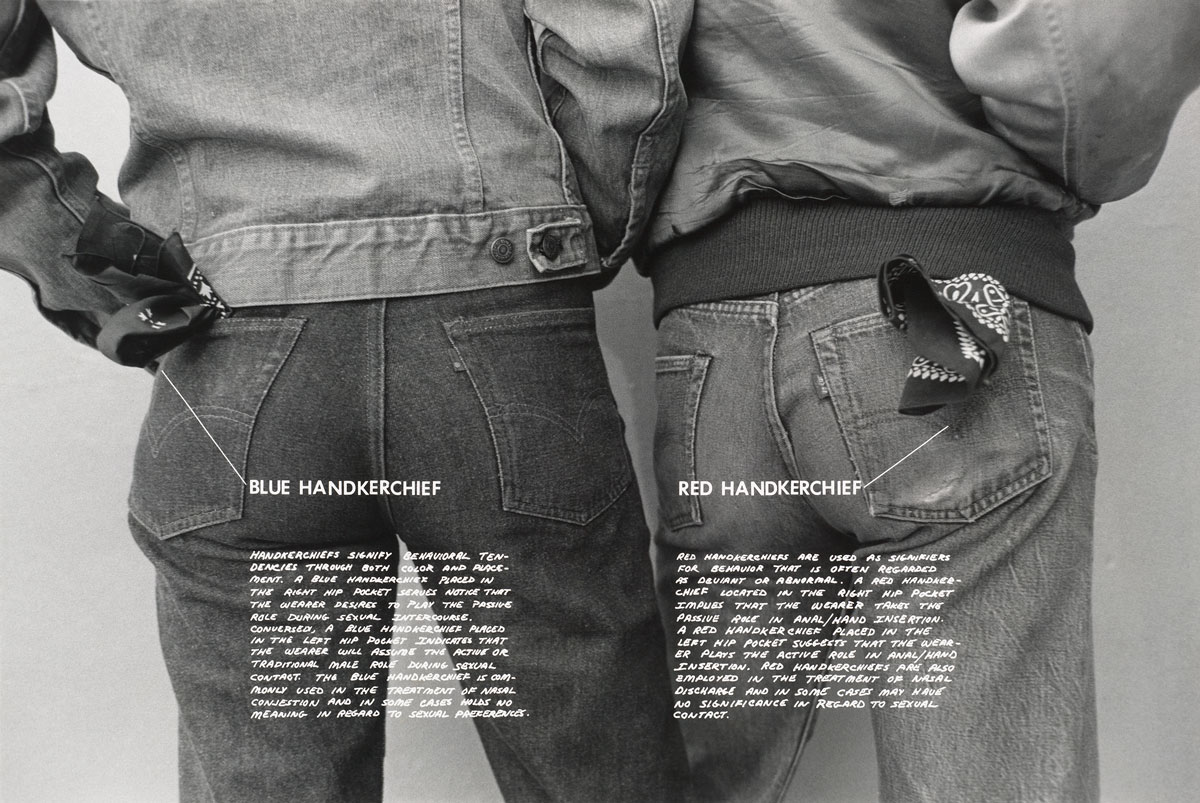What Time What Equals 36
SFMOMA's 'Thought Pieces' Turns Dorsum Time to 1970s San Francisco
Failed to save article
Please try once more

Lew Thomas, 'Time Equals 36 Exposures,' 1971, printed 1989. (© Lew Thomas)
There's something securely satisfying virtually exhibitions that focus on a specific time and place. To me, visiting these shows is a fleck like time travel. When curators narrow their purview to emphasize overlooked works, underappreciated artists or movements that accept simply fallen out of fashion, we get to exist in that time and space, with those voices, for the elapsing of a evidence. (It'southward no surprise that many of these "reconsiderations" oftentimes feature artists and movements previously glossed over by art history.)
Locally, Soul of a Nation: Art in the Historic period of Black Power does this exceedingly well, zooming in on Black Fine art of the '60s, '70s and '80s. At Los Angeles' Museum of Contemporary Art, With Pleasure: Pattern and Ornamentation in American Art 1972–1985 is stuffed with treasures from a movement that flew in the face of minimalism's "less is more" arroyo. And at the San Francisco Museum of Mod Art, Thought Pieces, a show of work by Lew Thomas, Donna-Lee Phillips and Hal Fischer, covers just one incredibly productive decade, when the friends and collaborators dedicated themselves to mining the human relationship betwixt photography and language.
Curated past Erin O'Toole, Thought Pieces gathers photographs, publications, correspondence and ephemera from the three artists. Thomas is the ringleader, positioned as a man on a mission to "disrupt" the San Francisco photography scene, which he viewed as overly influenced past "mystical thinking and emotionalism."

In (loftier) dissimilarity to this perceived trend, Thomas wanted to dribble photography down to its core elements. The first result of this thinking was Black & White, a diptych of the title's text on solid black and white backgrounds. Thomas afterwards described the slice equally a kind of breakthrough; he didn't need to become somewhere special or even locate a subject area to make a photograph. "All the content I would ever need for photography was already with me," he wrote in his 1978 volume Structural(ism) and Photography.
While this may sound limiting, Thomas' work is delightfully varied. It encompases conceptual experiments (tossing a camera in the air), serial studies (the motion of daylight across a floor) and deadpan one-liners (a life-sized epitome of a four-foot-long ruler hangs surreptitiously in a gallery doorway). He as well made a number of fragmented photographic collages that operate similar impressionist paintings. Individually, the prints contain footling to no information. In aggregate, they combine to create a recognizable prototype. A personal favorite in this vein is The Vacuum, a composite image of a Kenmore vacuum cleaner made out of ix gelatin silver prints. The frame, custom-fabricated to fit the artwork's irregular shape, is half the fun.
For Phillips and Fischer, the older photographer was a mentor, confidante, supporter and friend. Multiple vitrines featuring letters between the artists, articles written virtually each other's work and publications made together prove to these fruitful relationships. A postcard sent by Thomas to Fischer in 1976 seems to document their starting time meeting. "I don't see many literate people in the photograph context, so our conversation was very delightful and informative," Thomas writes.

On the other side of the triangle, Phillips and Thomas cofounded NFS Press in 1975, which published Structural(ism) and Photography along with titles like Eros & Photography (co-edited by Phillips and Thomas) and Fischer's 1977 book Gay Semiotics (initially banned, Fischer remembers, from the SFMOMA bookstore). Phillips' personal work showcases both her design sensibility and feminist accept on conceptual photography. The series 100 Chairs, More than or Less seems to pick upward (with more cheek) where Joseph Kosuth left off.
"This is certainly a chair," reads the condom-stamped text beneath i of Phillips' identical chair photographs. "This is probably a chair," says another. In her series Fragments from a Visual Journal, self portraits made over two months in 1977, her vesture selections (or lack thereof) combine with flow-of-consciousness text to detail her mental and physical land. Nothing happens per se, but as text included in another one of her works says, "Nil photographed is something." Similar Thomas, all the content she needed was already with her.
Much of the power in all three artists' work comes from the demonstration of how images change as dissimilar text is practical to them (or conversely, what happens when an image changes and text remains static). The sometime is near noticeable in Fischer's Civic Center, three identical prints of San Francisco's metropolis hall presented with three unlike captions. The showtime describes a Gay Pride parade in June 1978. The second details celebrations afterward the Briggs Initiative, which would have banned gay and lesbian teachers from California's public schools, failed to pass. And the 3rd, dated Nov. 29, 1978, sketches the aftermath of Harvey Milk's murder.

All of Fischer's work has a tinge of sociological study to information technology. With deadpan sense of humor and precise writing, Fischer breaks down the visual coding of the Castro scene in Gay Semiotics, documents his own sexual encounters and captures 24 hours of activity at a San Francisco bus stop.
The express scope of Thought Pieces functions much similar one of Lew, Phillips or Fischer's ain series. At that place are constraints, temporal and physical, to the presentation. On the time-travel front, it's worth noting that the iii artists' work hasn't been shown together since 1981, when Thomas organized a show called Photographs and Words at SFMOMA. The focus on the '70s also means Thought Pieces answers few questions of the "where are they now?" variety.
But as a document of a close-knit artistic circle establishing a visual language of their own—i that continues to read equally fresh, engaging and intellectually gratifying—Thought Pieces proves fifty-fifty a three-person community tin can button artistic production into new realms.

'Thought Pieces' is on view at the San Francisco Museum of Modern Art through Aug. nine, 2020. Details here.
Care about what's happening in Bay Surface area arts? Stay informed with one e-mail every other week—right to your inbox.
Thanks for signing up for the newsletter.

What Time What Equals 36,
Source: https://www.kqed.org/arts/13874133/sfmoma-thought-pieces-review
Posted by: roomdoduchis.blogspot.com


0 Response to "What Time What Equals 36"
Post a Comment